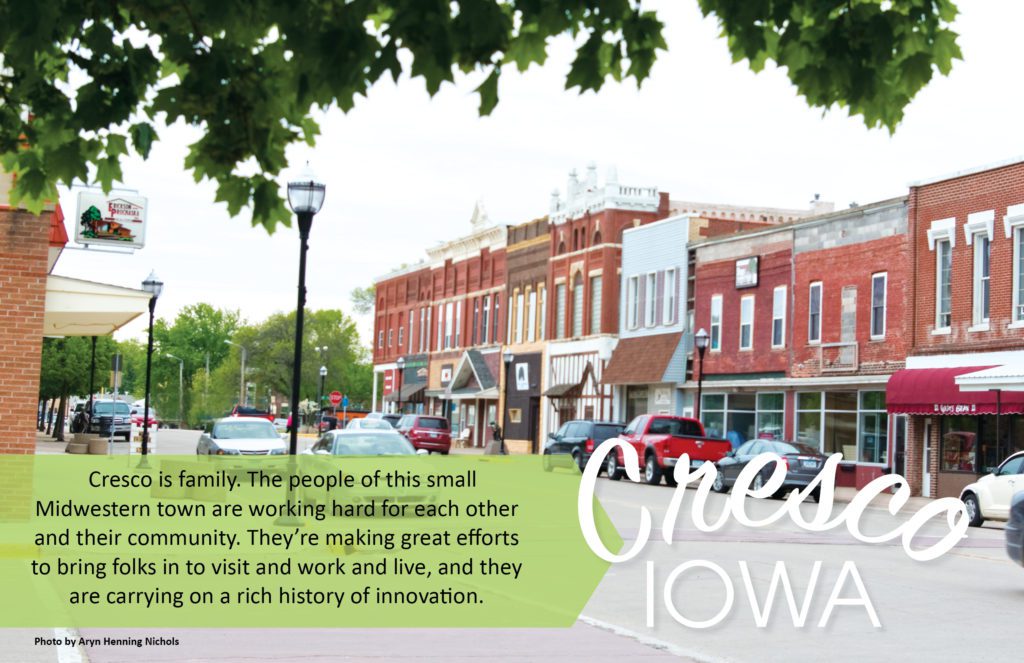The Borlaug Bounty: Feeding a Billion

By Aryn Henning Nichols
Growing up a member of the Clean Plate Club, “There are starving children in Africa,” seemed merely a parental guilt tactic to get us to eat the one thing on our plates dubbed “loser” – generally the most nutritious of the sides, like lima beans or spinach. While begrudgingly eating another painful bite, we thought to ourselves, “Yeah, yeah, yeah. Starving children. Who are they and what do they mean to me?”

At the same time, there was a man who also thought about starving children – plus men and women – in Africa. And India. And Mexico. Pakistan. Everywhere. He dug in the fields with them, worked in the research center for them, and developed a strain of wheat that would eventually help feed one billion people. This man’s name – like Kellogg or General Mills – should be associated with daily trips to the pantry, but even in his boyhood region of Northeast Iowa, the name Norman Borlaug is often met with a puzzled “who?”
A rural Cresco native, Norman Borlaug is debatably one of the most influential people of the 20th century. The father of the “Green Revolution,” he developed a disease-resistant, high-yield variety of dwarf wheat in an effort to fight world hunger. He is one of only five people in history to have won a specific trio of honors: the Nobel Peace Prize (1970), the Presidential Medal of Freedom (1977), and the Congressional Gold Medal (2007). The other four? Martin Luther King, Jr., Mother Teresa, Elie Wiesel, and Nelson Mandela. But despite the numerous accolades, Borlaug somehow manages to maintain his simple Iowa demeanor.
“I have always been impressed with how common and down-to-earth he is, even though he is an international hero and has met with and negotiated with presidents and dictators,” says Larry Stevenson, Norman Borlaug Heritage Foundation board president. “He is very likely better known in some countries than he is in his own home state.”
Born in 1914, Borlaug grew up like many other boys at that time: he worked the field with his father and planned to attend his one-room schoolhouse until eighth grade, then get back to the family farm indefinitely. But it was a time filled with innovation and determination, and enough people saw a spark in Borlaug that they encouraged him to imagine another direction, starting with high school. Education, Borlaug’s Norwegian grandfather Nels said, was key.
“He was always a very curious boy,” says Borlaug’s sister, Charlotte Culbert, one sunny afternoon at the Borlaug homestead. “My sister Palma and I figured he would do something great. I remember he would say, ‘If you can’t do something, tackle it another way. Try and reach for the stars.’”
The stars were in Borlaug’s sights all the while. Through a Depression-era program called the National Youth Administration, Borlaug was fortunate enough to be able to attend college at the University of Minnesota. He graduated with a degree in forestry, years of wrestling under his belt (he even helped introduce the sport to Minnesota high schools), and an interest in food crops and plant breeding. His forest service job was cut after just a couple of years, so Borlaug headed back to the U of M to study plant pathology. He received a Master of Science in 1939 and a Doctorate in 1942.
After two years as a microbiologist on the staff of the du Pont de Nemours Foundation in Delaware, Borlaug accepted a position in rural Mexico organizing and directing the Cooperative Wheat Research and Production Program. Over the next two decades he developed his best-known achievement: a strain of dwarf wheat that tripled grain production there. This eventually led to the “Green Revolution,” the development of high-yielding crops in conjunction with technologies like hybrids, fertilizers, and pesticides. He worked in the fields as much as possible, right alongside Mexican farmers the research was to benefit. Some new varieties of grains produced yields two to four times that of traditional strains, shortened the time required for growth, and produced a plant that could handle diseases and extreme climates.
The Green Revolution spread across the world. With help from the Rockefeller and Ford Foundations and additional government agencies, funding was increased, and in 1963 the Mexico research institution called The International Maize and Wheat Improvement Center was founded. The resulting research benefited millions worldwide. Starting in India and Pakistan, the revolution continued on to Southeast Asia, China and beyond. It was “a temporary success in man’s war against hunger and deprivation,” Borlaug has said, not an answer to the real problem. It would merely allow more time to figure out a long-term solution.
“I think Norm brought the technology to needy countries at a critical time,” Stevenson says. “I’m certain it would have happened eventually, but I think the work ethic, passion, and value system that Norm brought with him was unique and critical to the success of the effort. Norm focused on helping individual farmers improve their production capacity, making them self sufficient and capable of making a living for themselves and their families.”
Borlaug, who passed away September 12, 2009, had put enough work in for five men’s lifetimes by the mid 1980s. 70 years old, he was semi-retired and ready to take it a little easier. But Japanese businessman and philanthropist Ryoichi Sasakawa had other plans. Why wasn’t anyone doing anything about all the starving people in Africa? After decades of research and fieldwork, Borlaug thought he was “too old” to go to a place like Africa to continue the battle against world hunger. To that Sasakawa responded: “I’m 15 years older than you. We should have started yesterday.” Although Sasakawa has since passed away, his and Borlaug’s work continues in Africa. Hunger is not something Borlaug will ever consider beaten, at least not in his lifetime.
“He thinks about world hunger all the time,” says Borlaug Heritage Foundation board member Don Arendt. “No matter when you speak with him, he eventually talks about hungry people.”

Borlaug is and was so entrenched in advancing efforts to challenge poverty and world hunger that after winning the Nobel Peace Prize, with the help of Carleton Smith and General Food Corporation, he created a new award to recognize exceptional achievement in agriculture: the World Food Prize.
Gifted at the annual Laureate Award Ceremony, the $250,000 prize is now endowed by philanthropist, businessman, and fellow Iowan John Ruan. Ruan “saved” the prize from defunct status in 1989 when General Foods withdrew its sponsorship. He moved headquarters to Des Moines, Iowa, and put together a foundation with a bi-partisan Council of Advisors including names such as former Philippine President Corazon Aquino; former U.S. Presidents Jimmy Carter and George Bush; and H.E. Joaquim Chissano, former President of Mozambique. Chairman until 2003, Ruan supported the prize because he feels a second Green Revolution is necessary to prevent the possibility of future food crises. Today his son, John Ruan III, serves as chairman.
The Prize recipients, hailing from locations all over the world, have contributed a range of research and advancements in agriculture and the fight against global hunger. The World Food Prize also holds an International Symposium and a Global Youth Institute each October – this year it will run from October 14 through 16 and the focus is “Food, Agriculture, and National Security in a Globalized World.” Recently renamed “The Borlaug Dialogue,” the symposium fosters a discussion on world hunger and related issues. It brings more than 700 people from 60-plus countries to Des Moines each fall for what organizers call “the most significant observance of World Food Day anywhere around the globe.” They talk about topics like the threat of agro-terrorism, the impending global water crisis, the worldwide challenges of obesity and malnutrition, and the impact of biofuels.
There is, of course, a flip side to the coin, and to tell you the truth, food and population are pretty darn political. First there are the age-old Malthusian Theorists who believe population overgrowth will perpetually get “righted” by famine and epidemics. In 1798, Thoman Malthus published “An Essay on the Principle of Population” describing his theory. He made two main points that supposedly proved his assessment: “First, that food is necessary to the existence of man. Secondly, that the passion between the sexes is necessary and will remain nearly in its present state… I say, that the power of population is indefinitely greater than the power in the earth to produce subsistence for man.” Basically, our population would outgrow our resources and widespread mortality was a necessary evil.
Borlaug battled this theory, and seemingly won, at least for now. According to a June 2009 National Geographic Magazine article, “The Global Food Crisis: The End of Plenty,” by Joel K. Bourne, Jr., the benefits of the Green Revolution in terms of production alone are hard to deny. “India hasn’t experienced famine since Borlaug brought his seeds to town,” it says, “while world grain production has more than doubled. Some scientists credit increased rice yields along with the existence of 700 million more people on the planet.”
Whether this is a good or bad thing is highly debated. But what could Borlaug do? Just let a nation starve?
“I have never experienced nor witnessed severe hunger or starvation, but I suspect those that have come away with a dedication to finding a way to stop it and prevent it from reoccurring,” Stevenson says. “Norm admits that it will take more than just increased food production to feed the growing population, it will also require educating people about population growth.”
Next, there are, of course, problems with the Green Revolution that – like so many things – are clearly viewed in hindsight. In the 80s Borlaug was met by a borage of criticism: pesticides, it seemed, were a probable cause of cancer, fertilizer was far from the natural, organic way that was taking the Western world by storm, and irrigation systems were expensive, impractical, and damaging to the land of these developing countries the new technologies were supposedly benefiting. And while Borlaug has been known to admit that some of these things, specifically pesticides, could be harmful, it never trumps the immediate need to eat.
“Some of the environmental lobbyists of the Western nations are the salt of the earth, but many of them are elitists,” Borlaug says in a 2000 interview with Reason Magazine. “They’ve never experienced the physical sensation of hunger. They do their lobbying from comfortable office suites in Washington or Brussels. If they lived just one month amid the misery of the world, as I have for 50 years, they’d be crying out for tractors and fertilizer and irrigation canals and be outraged that fashionable elitists back home were trying to deny them these things.”
Even pesticides, he says in the same interview, get a bad rap. “All serious agronomists know that pesticides must be kept to a minimum, and besides, pesticides are expensive. But somehow the media believe the overspraying is still going on, and thus creates a bias against high-yield agriculture.”
This statement is hard for the wave of organic-lovers to swallow, no pun intended. Ironically, the term “green” today refers to organic, sustainable, eco-friendly habits (when it has long been used to refer to cash). My own clean plate last night consisted of a frittata with local eggs, a salad with greens from our CSA (Community Supported Agriculture), and grass-fed bacon from our friends’ organic farm, Grass Run Farm. And it was good. Plus we enjoy supporting our neighbors and feel healthier, personally, when we eat organic and local food.
But not everyone in the world can have access to this luxury. In an opinion piece for the Wall Street Journal published July 30, 2009, Borlaug writes: “Even here at home, some elements of popular culture romanticize older, inefficient production methods and shun fertilizers and pesticides, arguing that the U.S. should revert to producing only local organic food. People should be able to purchase organic food if they have the will and financial means to do so, but not at the expense of the worlds’ hungry – 25,000 of whom die each day from malnutrition.”
With the population estimated to lurch upwards of 9 billion by 2030, scientists are predicting the need for another Green Revolution to meet the requirements this will produce: reportedly double the current food production. Organic, Borlaug says, is simply not practical for everyone.
But just maybe this new green revolution could be a hybrid itself. Perhaps there is room in the world to both feed the hungry and educate them on population control and healthy farming practices. We need to find solutions to get us to the next moment and solutions to get us to the next generation. The goal: Staying alive while also having a good quality of life. But no matter what, there needs to be something in the bellies of the world’s people.
“Of history, one thing is certain: Civilization as we know it could not have evolved, nor can it survive, without an adequate food supply,” Borlaug writes.
No one would have thought that one man could feed a billion people, so who knows what the next generation of thinkers, scientists and farmers will bring. A Borlaug of the new era? In an Iowa Public Television program, the determined father of the Green Revolution encourages the masses to try.
“Too many people are satisfied with mediocrity,” he says. “They never try to attain their maximum potential. They don’t reach for the stars. If they did, there would be more people with stardust on their hands.”
Aryn Henning Nichols learned a lot about food and farming in the research of this story. It honestly made her head hurt more than a little bit, and led to many an interesting conversation/debate in the Inspire(d) headquarters kitchen.
Learn more about Norman Borlaug at www.normanborlaug.org













